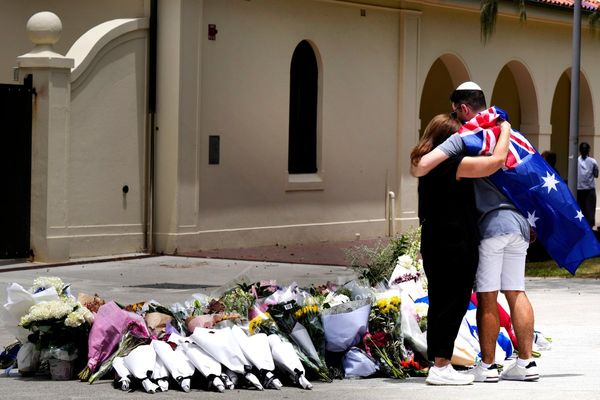
At James Clarke's property on the southern tablelands of NSW, in what's regarded as a high rainfall area, the dams are running dry.
The beef and sheep farmer wants to destock, but with prices in both markets dropping dramatically in the past year, instead he's getting ready to sell his car to buy hay.
The NSW farmer only just came out of drought in 2019 when he sold all but ten of his herd, and the financial and emotional burden is taking its toll.
"It's all starting again now, it's been a recovery period in the last four years where we've hung onto stock and only sold a handful," Mr Clarke tells AAP from his farm near Braidwood.
In the past six months Mr Clarke's farm has received just a quarter of the usual rainfall, 46 millimetres compared to a couple of hundred.
His region was officially declared drought affected in September.
Australia experienced its driest September on record according to the Bureau of Meteorology, with the rainfall 70 per cent below the 1961–1990 average.
The drying conditions have seen more farmers reach out for help.

John Warlters from Rural Aid says there has been a huge jump in demand at his charity for mental health services, water and fodder.
Rural Aid's deliveries of emergency drinking water have doubled month on month since July across Australia, with the most requests coming from Queensland and NSW.
"That upswing has been since June and July ... we can't see that request for assistance changing until we get widespread soaking rainfall," Mr Warlters told AAP.
In September the charity made 150 deliveries of emergency drinking water.
Mr Warlters says demand is about half of what was experienced during the peak of the 2017 to 2019 drought.
"We're really concerned how quickly the rate of requests are being received, and what this means with a hot dry summer forecast," the head of the rural charity says.
"What we're most worried about is the state of mind of families who, while they are getting assistance now, will not get the full benefit that comes with a declaration of a drought disaster."

Rural Aid counsellors have received 277 calls in September, a 95 per cent increase on the same time last year. Livestock prices and the dry conditions are the main causes of stress and anxiety.
Mr Clarke says he would normally make a modest living - but not this year.
"We've really made less than what you'd make on the dole, my accountant told me that in the last year," he says.
"This year would have been a pay day ... but before you know it the prices have plummeted."
Meat and Livestock Australia data shows sheep prices have fallen by more than 70 per cent in the past year, while prices are down by 65 per cent for cattle.
Agricultural analyst Michael Curtis from Rural Bank says those falls are expected to continue in the short term.
"We're expecting beef and sheep prices to drift lower, and continue to drift lower in the next month or so under that weight of strong supply," he says.
James Clarke is trying to stay optimistic but it's hard.
"You realise you are failing slowly, it's not because we're not doing things right it's because of conditions," he says.







